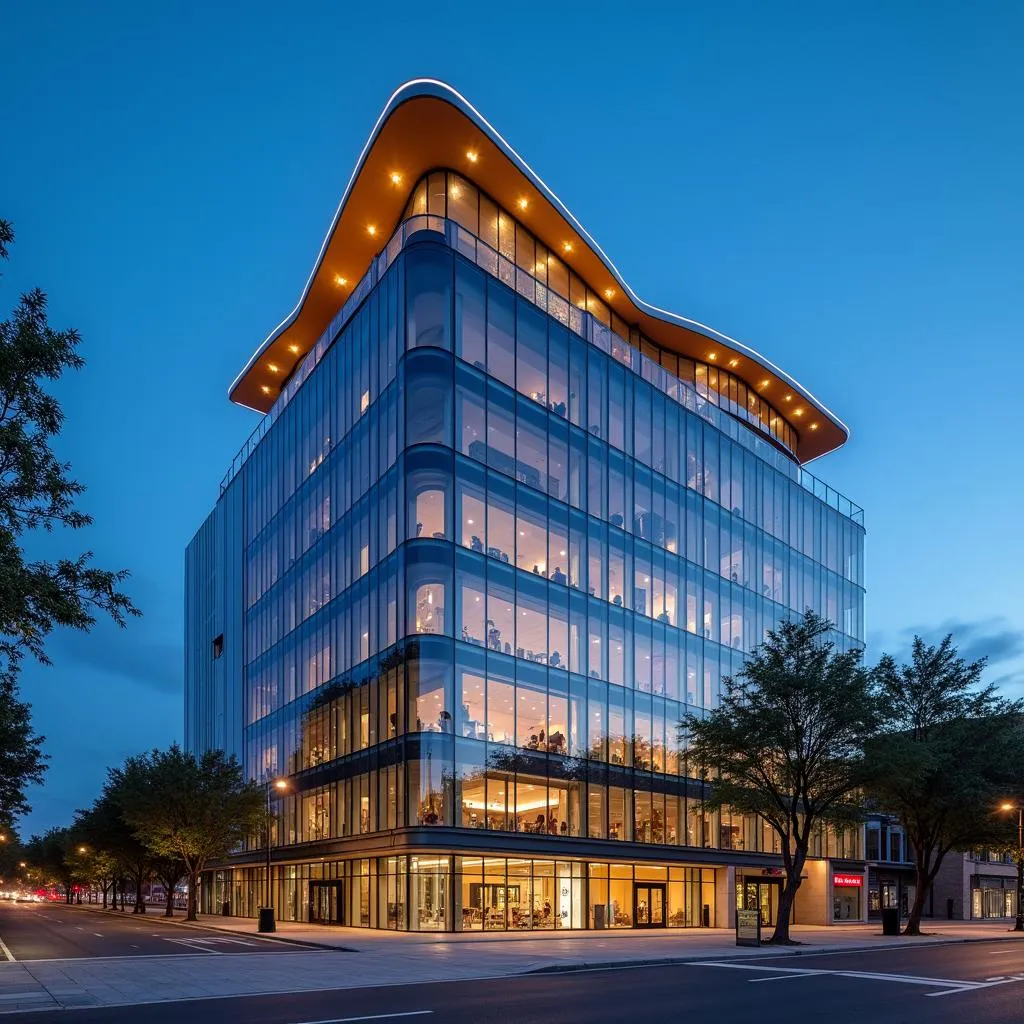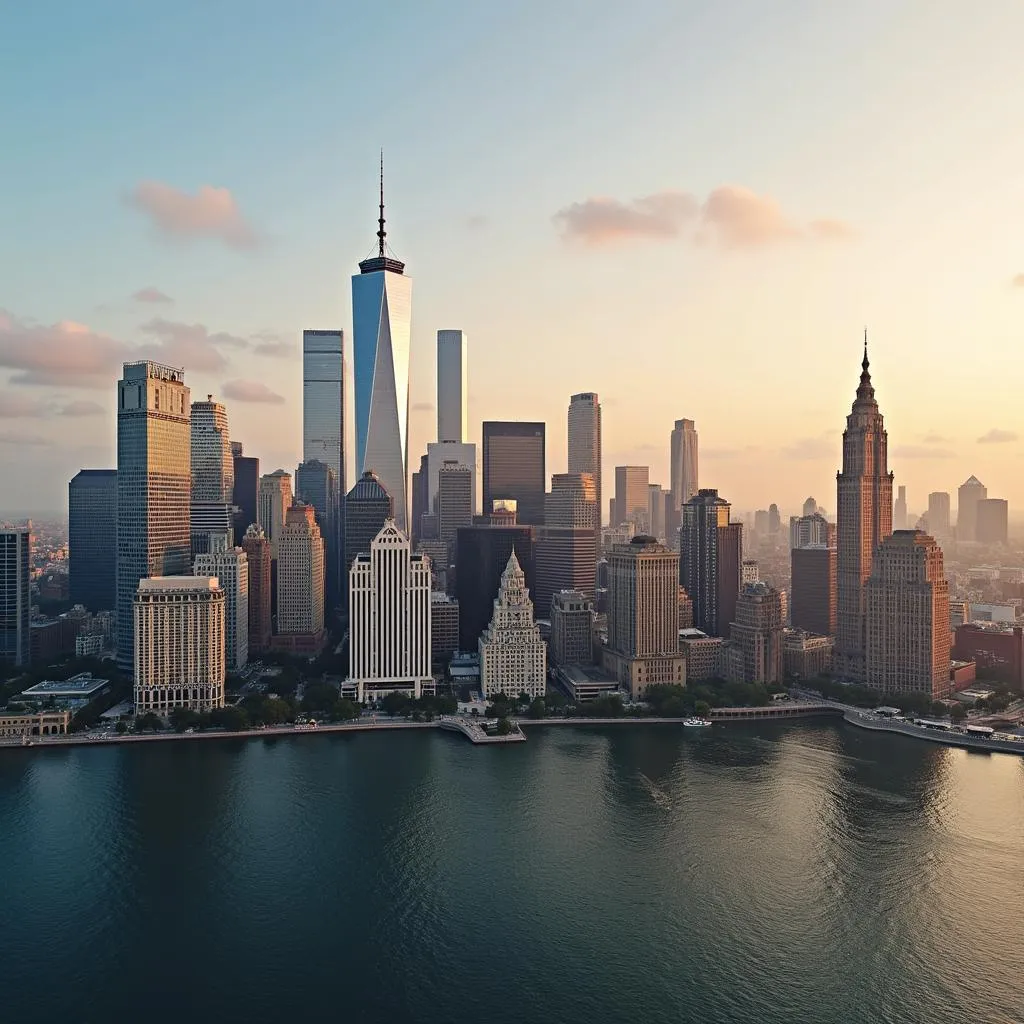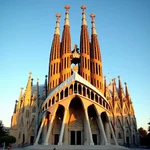The topic of describing a building in your city is a common theme in IELTS Speaking tests. It has appeared frequently in past exams and is likely to continue being a popular subject in future tests. This topic allows examiners to assess candidates’ ability to describe physical structures, express personal preferences, and discuss urban environments.
Describe a historical building you have visited can be a related topic that may also come up in your IELTS Speaking test. Being prepared for both modern and historical buildings will give you an advantage.
Part 1: Introduction and Interview
In Part 1, the examiner may ask you some general questions about buildings or architecture in your city. Here are some possible questions and a sample answer for one:
- What types of buildings are common in your city?
- Do you prefer modern or traditional architecture?
- Are there any famous buildings in your city?
- How has architecture in your city changed over time?
Sample answer for “Do you prefer modern or traditional architecture?”:
“I personally have a preference for modern architecture. I find the sleek lines and innovative designs of contemporary buildings to be visually appealing and exciting. Modern structures often incorporate cutting-edge technology and sustainable features, which I believe are crucial for the future of urban development. However, I do appreciate the historical significance and cultural value of traditional architecture as well. I think a city is most interesting when it has a harmonious blend of both modern and traditional buildings, creating a unique skyline that reflects its history and progress.”
Part 2: Long Turn
Cue Card:
Describe a building in your city that you like
You should say:
- What the building is
- Where it is located
- What it looks like
- And explain why you like this building
Sample answer (Band 8-9):
“I’d like to talk about the Central Library in my city, which is a building I’m particularly fond of. It’s situated in the heart of downtown, just a stone’s throw from the main square, making it easily accessible to everyone.
The library is a striking example of contemporary architecture. It’s a six-story structure with a façade that’s primarily glass, giving it a transparent and inviting appearance. The most distinctive feature is its roof, which is designed to resemble an open book, with two sloping sides meeting at a central spine. This clever architectural metaphor perfectly captures the building’s purpose.
At night, the building is illuminated from within, creating a warm, golden glow that makes it look like a beacon of knowledge in the city center. The interior is equally impressive, with open-plan floors, mezzanine levels, and a central atrium that allows natural light to flood the space.
I’m particularly drawn to this building for several reasons. Firstly, its innovative design is a testament to the city’s commitment to modern architecture and urban development. It’s not just functional; it’s a work of art that enhances our cityscape. Secondly, I appreciate how the design encourages learning and community engagement. The open, welcoming spaces invite people to come in, explore, and spend time reading or studying.
Moreover, the building is a model of sustainable architecture. It incorporates energy-efficient systems, uses recycled materials, and has a green roof that helps regulate temperature and reduce the urban heat island effect. This alignment with environmental values is something I deeply respect.
In essence, the Central Library is more than just a place to borrow books; it’s a symbol of our city’s progress, a hub of knowledge and community, and a beautiful addition to our urban landscape. It’s a building that makes me proud of my city and inspired about our future.”
 Modern library building in city center
Modern library building in city center
Follow-up questions:
- How has this building impacted the local community?
- Do you think more buildings like this should be constructed in your city?
Sample answer for question 1 (Band 8-9):
“The Central Library has had a profound impact on our local community. It has become a cultural hub, hosting various events, exhibitions, and workshops that bring people together. The building’s attractive design has also increased foot traffic in the downtown area, benefiting nearby businesses. Moreover, its state-of-the-art facilities have improved access to information and technology for many residents, particularly those from underprivileged backgrounds. This has contributed to bridging the digital divide in our community. The library’s environmentally friendly features have also set a precedent for sustainable construction in the city, inspiring other developers to adopt greener practices.”
Part 3: Two-way Discussion
Examiner: How do you think architecture influences a city’s identity?
Sample answer (Band 8-9):
“Architecture plays a pivotal role in shaping a city’s identity. It’s essentially the physical manifestation of a city’s history, culture, and aspirations. Iconic buildings often become symbols of a city, instantly recognizable worldwide – think of the Eiffel Tower in Paris or the Sydney Opera House. These structures become part of the city’s brand, attracting tourists and contributing to the local economy.
Moreover, architecture reflects the values and priorities of a society at different points in time. For instance, the prevalence of skyscrapers in a city might indicate its focus on business and commerce, while an abundance of public spaces and parks could suggest a emphasis on community life and well-being.
Architecture also has the power to shape the way people interact with their environment. Well-designed buildings and urban spaces can foster community engagement, promote sustainable living, and enhance quality of life. Conversely, poor architectural choices can lead to social isolation and environmental problems.
In essence, architecture is not just about aesthetics; it’s a powerful tool for urban development and social change. It can preserve a city’s heritage, drive innovation, and create a sense of place that residents can identify with and take pride in. As cities evolve, their architecture continues to tell their ongoing story, blending the old with the new to create a unique and dynamic identity.”
 City skyline with mix of modern and traditional buildings
City skyline with mix of modern and traditional buildings
Key Vocabulary and Phrases for High Scores
-
Façade /fəˈsɑːd/ (noun): The front of a building
Example: “The glass façade of the building reflects the surrounding cityscape.” -
Innovative /ˈɪnəveɪtɪv/ (adjective): Introducing new ideas; original and creative in thinking
Example: “The architect’s innovative design won several awards.” -
Sustainable /səˈsteɪnəbl/ (adjective): Causing little or no damage to the environment and therefore able to continue for a long time
Example: “The building incorporates many sustainable features, such as solar panels and rainwater harvesting systems.” -
Harmonious /hɑːˈməʊniəs/ (adjective): Forming a pleasing or consistent whole
Example: “The new structure blends harmoniously with the existing architecture of the neighborhood.” -
Testament /ˈtestəmənt/ (noun): Something that serves as a sign or evidence of a specified fact, event, or quality
Example: “This building stands as a testament to the city’s commitment to modern design.”
Examiner’s Advice: To score high in the IELTS Speaking test when describing buildings, focus on providing detailed descriptions using a wide range of vocabulary. Practice talking about different types of architecture, both modern and traditional. Be prepared to discuss not just the physical appearance of buildings, but also their impact on the community, their historical or cultural significance, and how they reflect the identity of your city. Use examples from your personal experience to make your answers more engaging and authentic.


